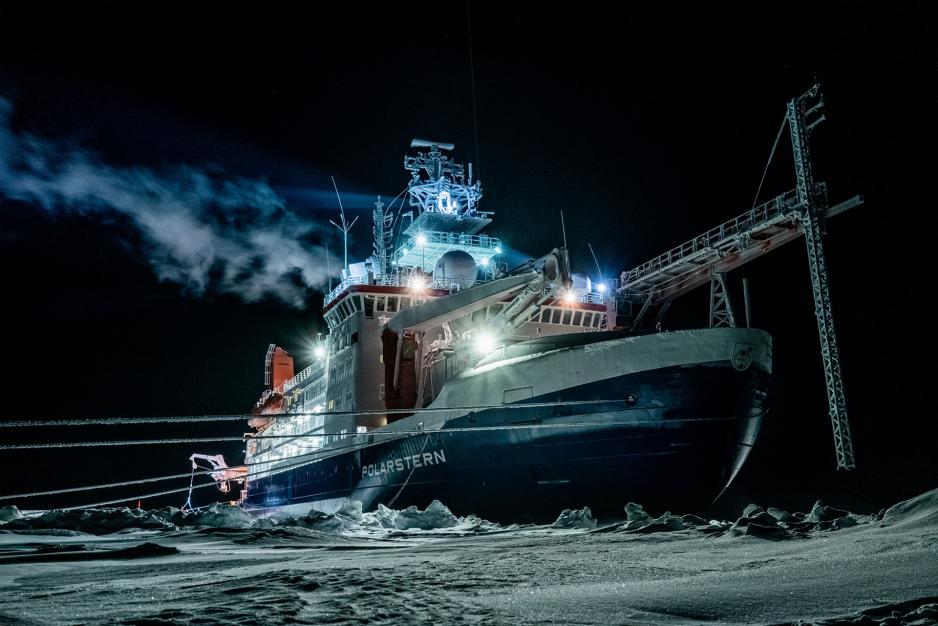MOSAiC expedition relief ships arrive in Svalbard to await the Polarstern
The research vessel should reach its resupply rendezvous by the weekend.

Scientists and researchers from around the world spent five years planning the $155 million MOSAiC expedition during which the Polarstern research vessel would drift enclosed by sea ice across the Arctic Ocean for 13 months. Expedition leaders of the MOSAiC project — which stands for Multidisciplinary drifting Observatory for the Study of Arctic Climate, spearheaded by Germany’s Alfred Wegener Institute — planned for countless eventualities and challenges the Arctic Ocean may throw at them. Except for a global pandemic which presented seemingly-insurmountable logistical challenges.
How would the expedition ensure the timely resupply and exchange of crew and staff with borders closing and international travel grinding to a halt? Norway’s Svalbard archipelago, which was intended as a staging hub for flights ferrying scientists to and from the Polarstern, closed for international visitors.
Expedition leaders had set a deadline of April 20 to come up with alternatives to resupply the Polarstern and conduct crew and staff exchanges. A number of backup options, including chartering icebreakers, resulted in dead ends. Even Russian and Chinese counterparts offered assistance, but their research icebreakers were already located in, or en route to, Antarctica.
“Behind the scenes people (are) working really hard to come up with solutions, and the solutions just keep slipping away,” Matthew Shupe, climate scientists and co-coordinator of MOSAiC said at the time.
Bringing Polarstern out of the ice
A solution came in the form of two German vessels — RV Sonne and RV Maria S. Merian. Usually the use of these research vessels has a two-year lead time, but during these extraordinary circumstances assistance came quickly and unbureaucratically.
The two ships departed Bremerhaven, Germany last week and arrived near Svalbard this past weekend, ready to rendezvous with the Polarstern to conduct the resupply and exchange of crew. Originally the Polarstern was supposed to remain in the pack ice for a whole year, but the COVID-19 pandemic necessitated a change of plans.
“We’re going to unfortunately have to bring the ship out, and this is not part of the original plan. But it’s the way logistics play out right now,” explained Shupe in a recent radio interview.
Throughout the last month the Polarstern experienced a rapid southward drift resulting in a southerly location in April that it was not expected to reach until August. This drift path brought it relatively close to Svalbard making a resupply mission near archipelago feasible.
Slow progress in thick ice
While RV Sonne and RV Maria S. Merian sailed from Germany to Svalbard in around a week, the Polarstern’s journey out of the ice has been more challenging due to thick ice conditions. The researchers packed up much of the science camp, except for some instruments left behind to continue recording data autonomously, and the ship departed from the ice floe on Saturday, May 16.
It was expected to reach the waters of Svalbard the morning following Saturday, May 23. However, thick second-year ice represented a formidable challenge for the research icebreaker. At times the ship had to use back-and-forth ramming technique to push through the ice.
“Indeed Polarstern’s progress is quite slow at the moment — but nothing completely unexpected, as ice and weather conditions in the Arctic can always slow down the ship’s speed,” explained Folke Mehrtens of the Alfred Wegener Institute to HNN.
When ice conditions become too severe the ship’s experienced crew decided to turn off the engines and instead drift with the ice floe until they encountered less dense ice. This approach also reduced fuel consumption.
“There is no extremely high fuel consumption as the experienced crew shuts down the engines when the ice conditions become too demanding,” elaborated Mehrtens.
High fuel consumption had become an issue earlier this year when the Russian icebreaker Kapitan Dranitsyn traveled into the pack ice to resupply and exchange crew. Due to severe storms and numerous detours to get around impassable ice the vessel ran low on fuel when it finally reached the Polarstern on February 28. A third ship had to be dispatched to refuel the Kapitan Dranitsyn.
Thinner ice allows for progress
After traveling just 70 nautical miles during the first week and with more than 130 nautical miles to go until the ice edge to the North of Svalbard, the ship finally found a lead in the ice allowing them to make steady progress. The vessel managed to travel more than 20 nautical miles in around eight hours Monday. The vessel is now expected off Svalbard by the weekend, the Alfred Wegener Institute confirmed to HNN.
After the resupply and crew exchange the vessel will be racing back to the ice camp in the hope of returning in time to observe the beginning of the annual seasonal melt.
With the southerly location of the ice camp it is unlikely that the ice floe will survive the summer melt season making it likely that the expedition will relocate further north during the next eight weeks to remain enclosed by ice throughout the summer.
CORRECTION: An earlier version of this story incorrectly gave the dates of two events as falling in March, rather than May. The story has been updated to with the correct information.